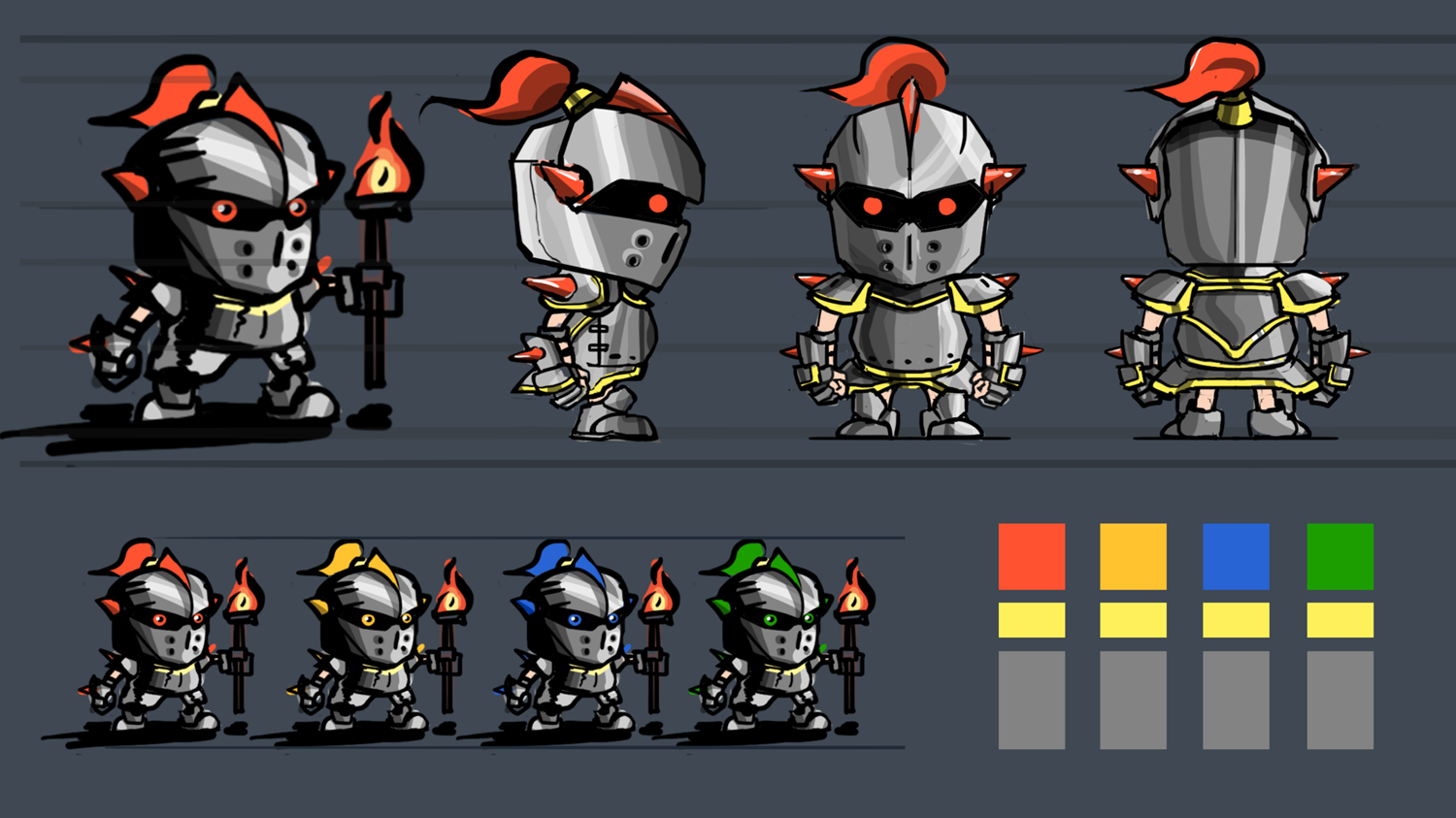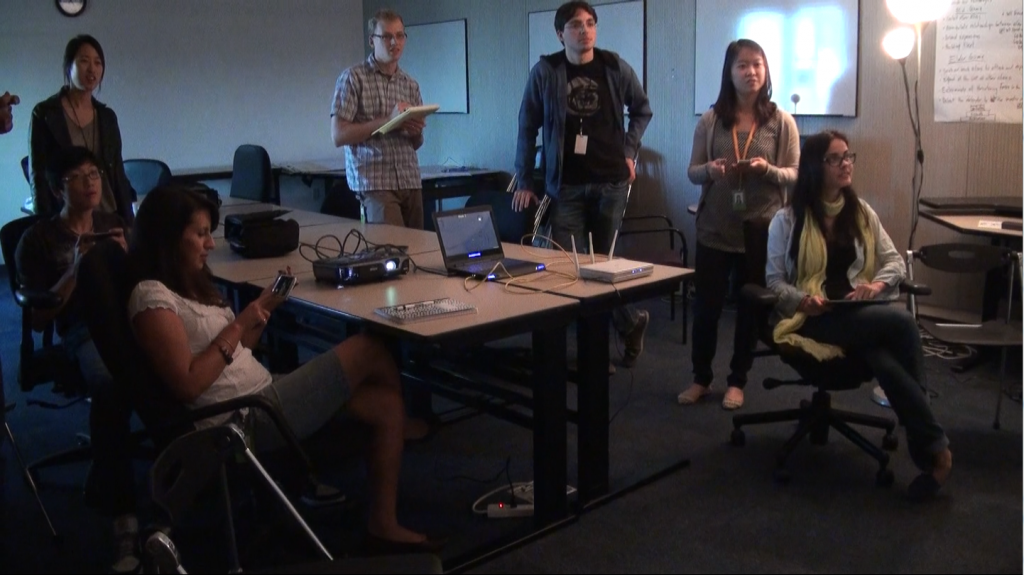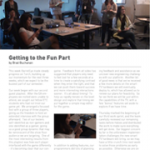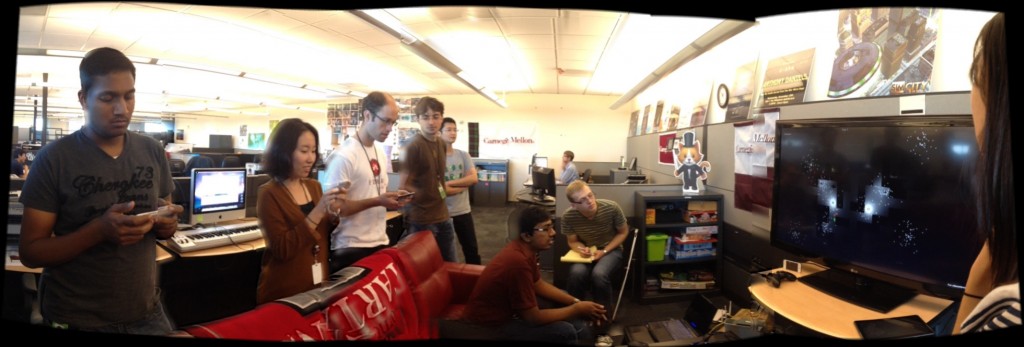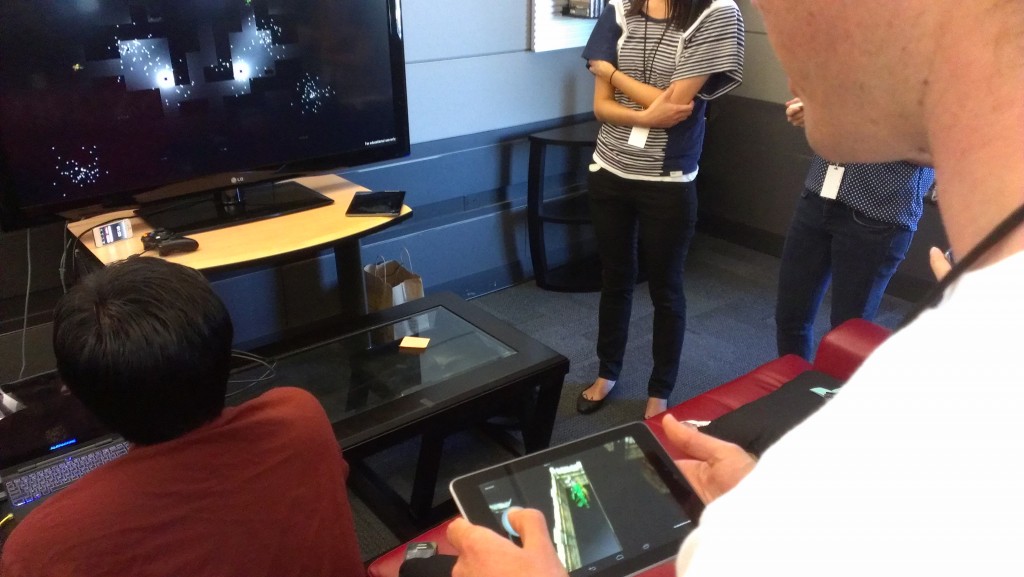Getting to the Fun Part
This week BarrelEye made steady progress on Torch, building up our momentum for the next three weeks, which we expect to be the busiest part of our semester.
Our week began with our second guest playtest. After the EA employees we invited were unable to attend, we sought out fellow ETC students who had not tried our game yet. We arranged a focused test with a group of three players, giving us the freedom to hold an extended interview with the group afterward. Two of our testers self-identified as non-gamers and one identified as a gamer, giving us a good group dynamic that may be reminiscent of the show floor audience we are targeting. One of the most interesting results from this playtest was how each player interfaced with the game differently – it’s becoming clear that our controls will require lots of iteration.
During the week we had multiple opportunities to demo the game to our client as well. In each case they confirmed that our progress is visible and they think we are headed in the right direction. However, we still feel that we are just beginning to find the fun in our game. Feedback from all sides has suggested that players only need to feel lost for a few seconds at a time to create a satisfying contrast when they enter the light, and that we can push them toward success and more interesting interactions sooner. It’s all about timing! To help us rapidly iterate on the level design and explore that timing we put together a simple map editor for the game.
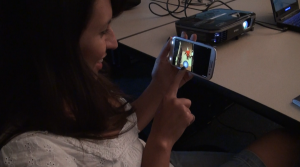
In addition to adding features, our programmers did lots of planning work this week. They jumped into the details of our network architecture and pinned down their strategy for integrating the many platforms and technologies we are using. We also pulled in technologists from the OCCO to review our networking plan and give us feedback on our approach. These partners have committed to provide us with ongoing feedback and assistance as we uncover new engineering challenges with our platform. Another bit of good news is that we’ve received a few more details on the smart TV hardware we will eventually deploy to, which has allowed us to review our plans for feasibility. So far we think we will be just within the capabilities of the TV, with a few “bonus” features set aside to explore if we have time.
Thursday marked the beginning of our third work sprint, and the team carefully reviewed our remaining tasks before Halves and distributed the work to make sure everything will get done. Our biggest concern by far is the unforeseen implementation challenges the new smart TV hardware will bring, so we may have a little crunch time next week to solve those problems as early as possible. Otherwise we are on schedule and having a lot of fun as we watch all the elements of Torch fall into place. There will be a lot to share in the next newsletter! Until then, have a great week!
Photos © Jaewan Park.
Internal Test #1
No, it’s not the only internal test we’ve had so far, but it is the most official! On October 2nd our team packed up our “test kit:”
- One laptop with our Unity/server build
- Three mobile devices with our Android/client build
- One HDMI cable
- One wireless router
…and we hauled everything over to the ETC project space in another building, set up on their TV and couch, and had our playtest in their space. We intended to test the game ourselves but our advisors and fellow students are awesome and happily tested our game with us!
We made big improvements to our prototype since our last playtest, and it was obvious in this test. In some ways, players had the opposite experience that they had last time. The biggest improvement was that we added an objective for the players – there are now three keys hidden in the maze, and we challenge them to find the three keys as fast as they can!
Here were our biggest takeaways from the playtest:
- Everyone wants the characters to move faster! And since they’re taking too long to find the keys, that would be a good idea.
- People keep asking about other ways to control the character, whether with tap-to-move or tilt controls. We may have to revisit this just because it’s a requested feature.
- We need to loudly broadcast the event any time somebody picks up a key – players were often uncertain how many keys they had collected. Audio will help with this too!
- Players reported not feeling lost at all – in fact, our lights on the TV are revealing the maze a little too much!
- Players also reported looked at the TV more than they looked at the phone. This is reversed from last time… good progress!
It was nice to have an informal playtest, just to keep the team focused on the user experience. Our next one will be a more formal guest test. It’s not far away!
Video Update #3
Categories

